
This paper summarises the processes and normative requirements involved in grading of structural timber, and outlines a number of areas in which matters may be improved, so as to make better use of the true properties of the timber resource used. The activities of resource segregation and timber grading are well researched, but what is not commonly realised is that there are opportunities to do things more efficiently. This is especially true when the structural timber is produced with a specific customer, project, or end use in mind. The paper uses data from research projects, and development of machine grading settings, to illustrate how assignment of timber to a limited set of strength grades can, in exchange for convenience in trade, involve considerable compromise in design properties. In some cases, this trade convenience is not necessary or can still be obtained while also permitting less of a compromise in design properties. The paper also explains why, in research, knowledge of the timber grade is not all that useful and why it is necessary to take other steps to characterise the material. The focus of the paper is strength grading in Europe, but many of the aspects are also applicable elsewhere.
SUMMARY
There is an opportunity to use grading more intelligently: taking advantage of the flexibility of strength classes to make better use of the true properties of the timber used. Tailored strength classes, and standard strength classes with enhanced secondary properties can be used when the graded timber is not placed on the open market, because it is graded within the same company that uses it, or is manufactured to order for a specific customer. Furthermore, if a company is grading timber for its own use manufacturing timber kits, or glued laminated members, then it makes sense to consider whether the general grades are the best option. With the availability of relatively inexpensive and simple portable grading machines, and the option of output control grading, it may also make better business sense to grade to strength classes tailored to the timber source, or the end use. Density is a particular case in point as it can be measured very well in the grading process.
Furthermore, it is necessary to realise that strength classes are not good descriptions of wood properties for research work and that the strength class of a single piece of timber gives little information about the properties of that particular piece, other than a statistically defined lower bound.
Finally, the amount of destructive testing involved in establishing machine grading settings and visual grading assignments presents a barrier to greater use of local timber, and diversification of commercial species, so it is important that any researcher assessing the properties of such species should consider, from the outset, doing the research in a way that can contribute to a grading dataset at a later date.


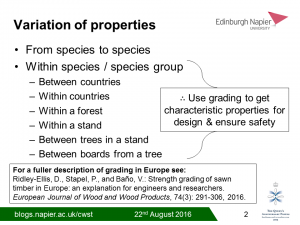
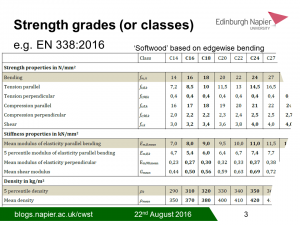
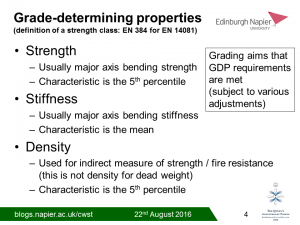

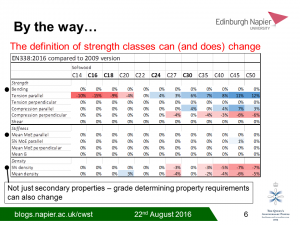
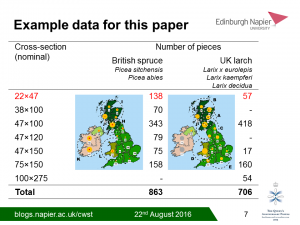
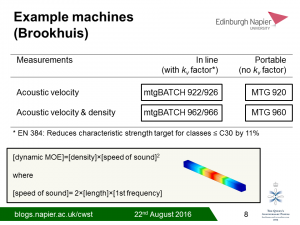





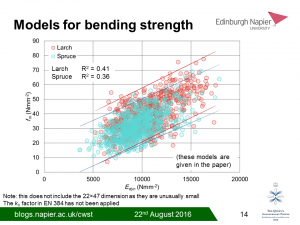

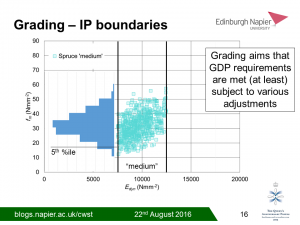
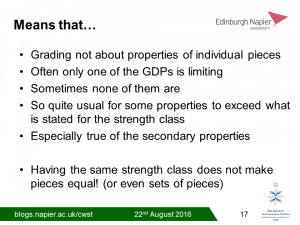

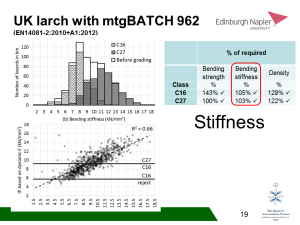
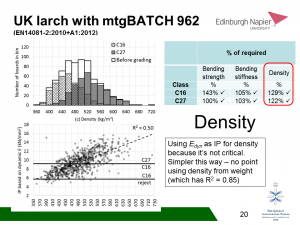


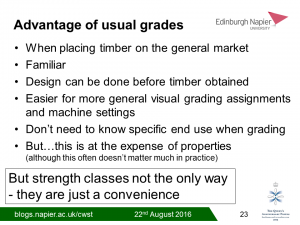
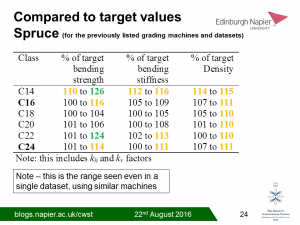
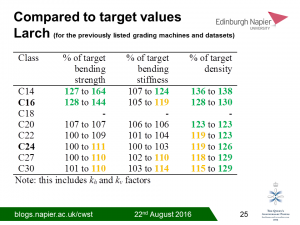
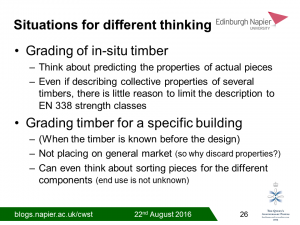

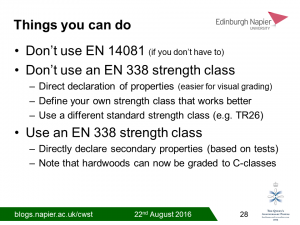

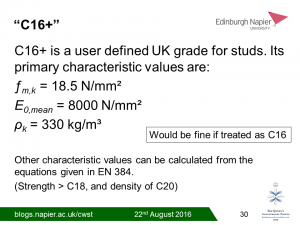
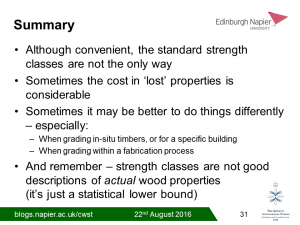

Leave a Reply
You must be logged in to post a comment.